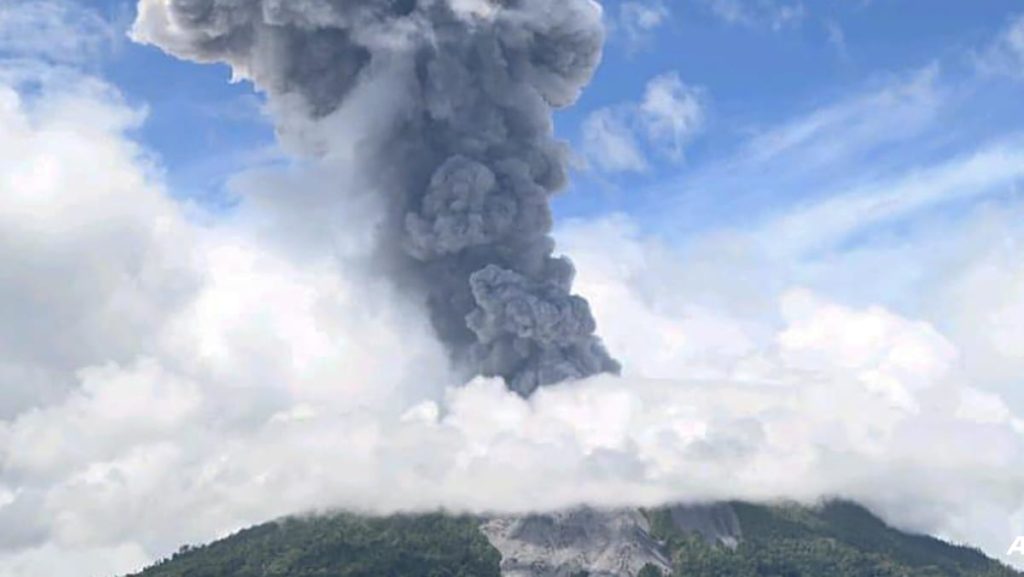Ibu, one of Indonesia’s most active volcanoes, erupted on Friday, spewing volcanic ash 4,000m above its peak. Authorities warned residents and tourists to stay out of the exclusion zone within four-to-seven kilometers of the volcano and to wear face masks to protect against falling ash. In 2022, more than 700,000 people lived on Halmahera island, where Ibu is located, making it crucial for authorities to monitor and respond to volcanic activity effectively.
Indonesia, as a country situated on the Pacific “Ring of Fire,” experiences frequent seismic and volcanic activity. This makes it imperative for government agencies like the country’s geology agency to closely monitor and assess volcanic threats to protect the population living in vulnerable regions. With Ibu erupting over 21,000 times last year and Mount Ruang in North Sulawesi province also experiencing multiple eruptions recently, government agencies are on high alert to ensure the safety of residents and tourists in these volcanic regions.
The eruption of Mount Ruang in North Sulawesi last month resulted in the evacuation of thousands of residents living on nearby islands. While the volcanic activity has since decreased, authorities have reduced the alert level to the second-highest category. This highlights the importance of continuous monitoring and mitigation efforts to safeguard communities at risk of volcanic eruptions and the potential impact on their lives and livelihoods.
Despite the potential dangers posed by Indonesia’s active volcanoes, the country’s official figures show a significant population residing in these high-risk areas. With more than 700,000 people living on Halmahera island, where Ibu erupted, it is crucial for authorities to educate and prepare residents for possible volcanic threats, ensuring they have the necessary protective measures in place. By advising residents and tourists to stay out of exclusion zones and wear masks during eruptions, authorities aim to minimize the risks associated with volcanic ash and gases.
The recent eruption of Ibu highlights the ongoing challenges faced by Indonesia in managing volcanic activity and protecting its population. With the country’s position on the Pacific “Ring of Fire” contributing to frequent seismic and volcanic events, government agencies must remain vigilant in monitoring and responding to these natural hazards. By working closely with communities, providing timely warnings, and implementing effective evacuation plans, authorities can help mitigate the impact of volcanic eruptions on people’s lives and safeguard their well-being in high-risk areas.
As Indonesia continues to grapple with the threat of volcanic eruptions, it is essential for authorities to maintain proactive measures to protect the population from potential hazards. By keeping a close watch on active volcanoes like Ibu and Mount Ruang, and issuing timely alerts and safety recommendations, the government can help ensure the safety and well-being of residents and tourists in volcanic regions. By learning from past eruptions and improving disaster preparedness and response capabilities, Indonesia can better manage the risks associated with living in a volcanic-prone environment and mitigate the impact of future volcanic events on communities.















